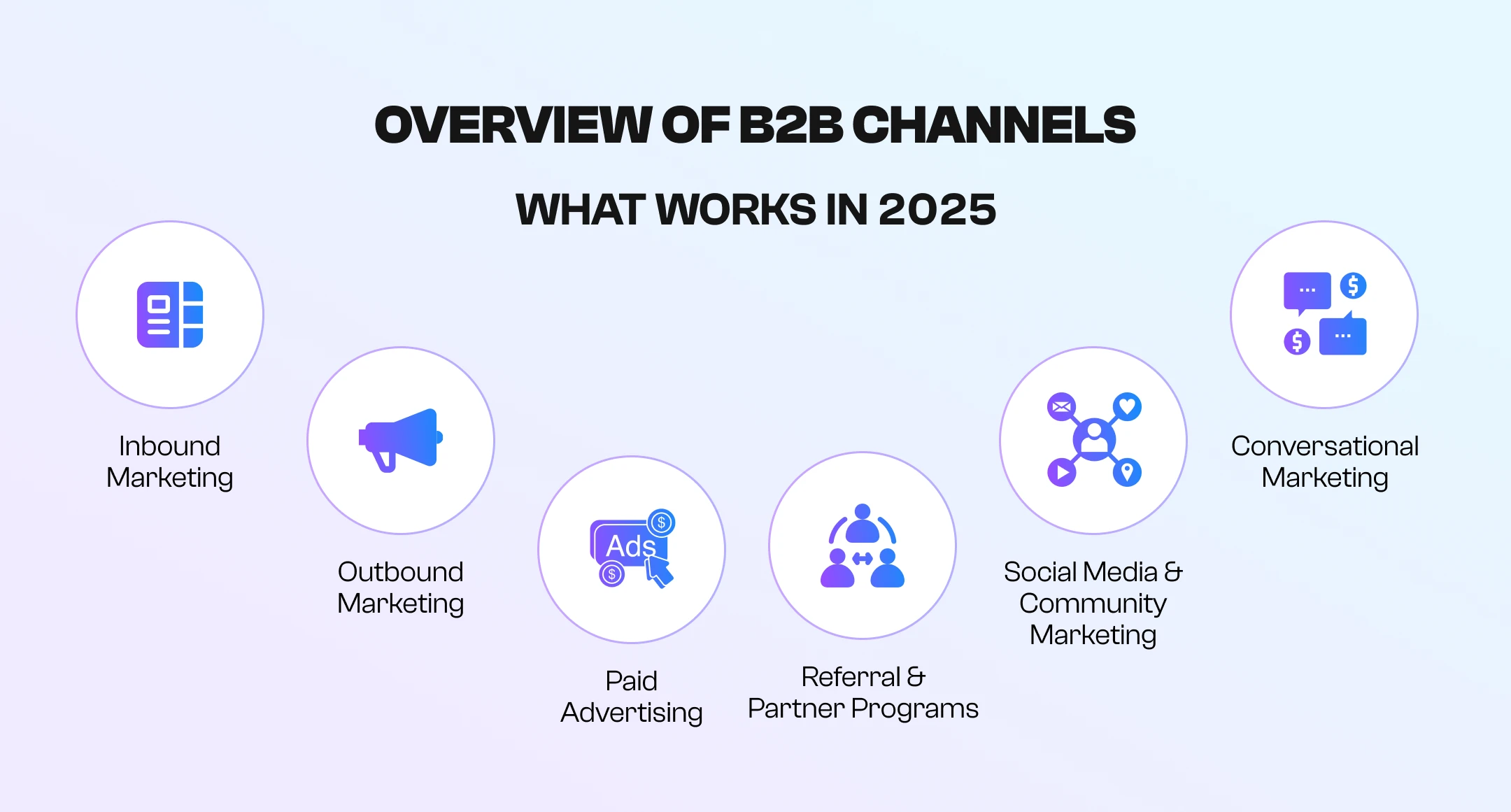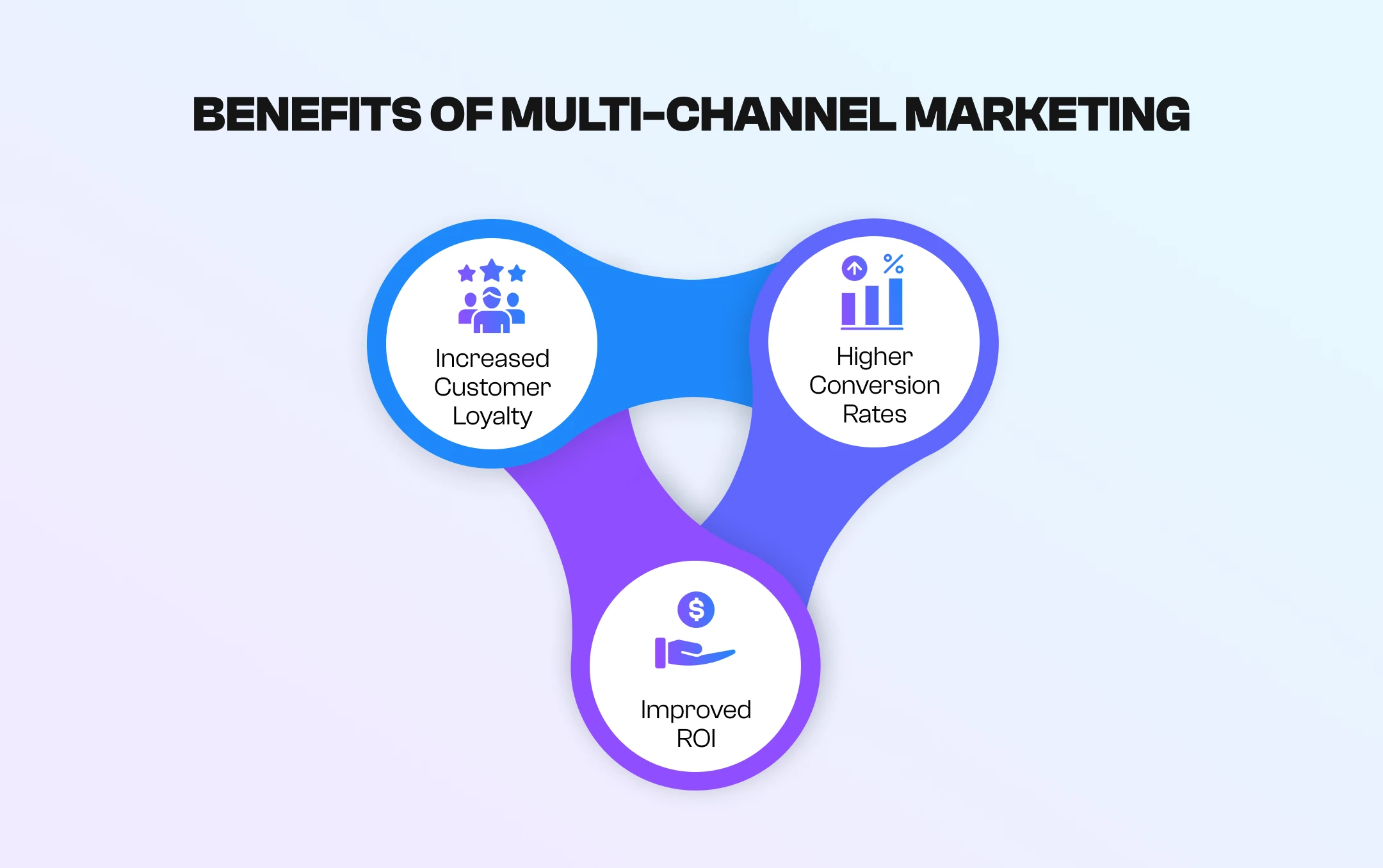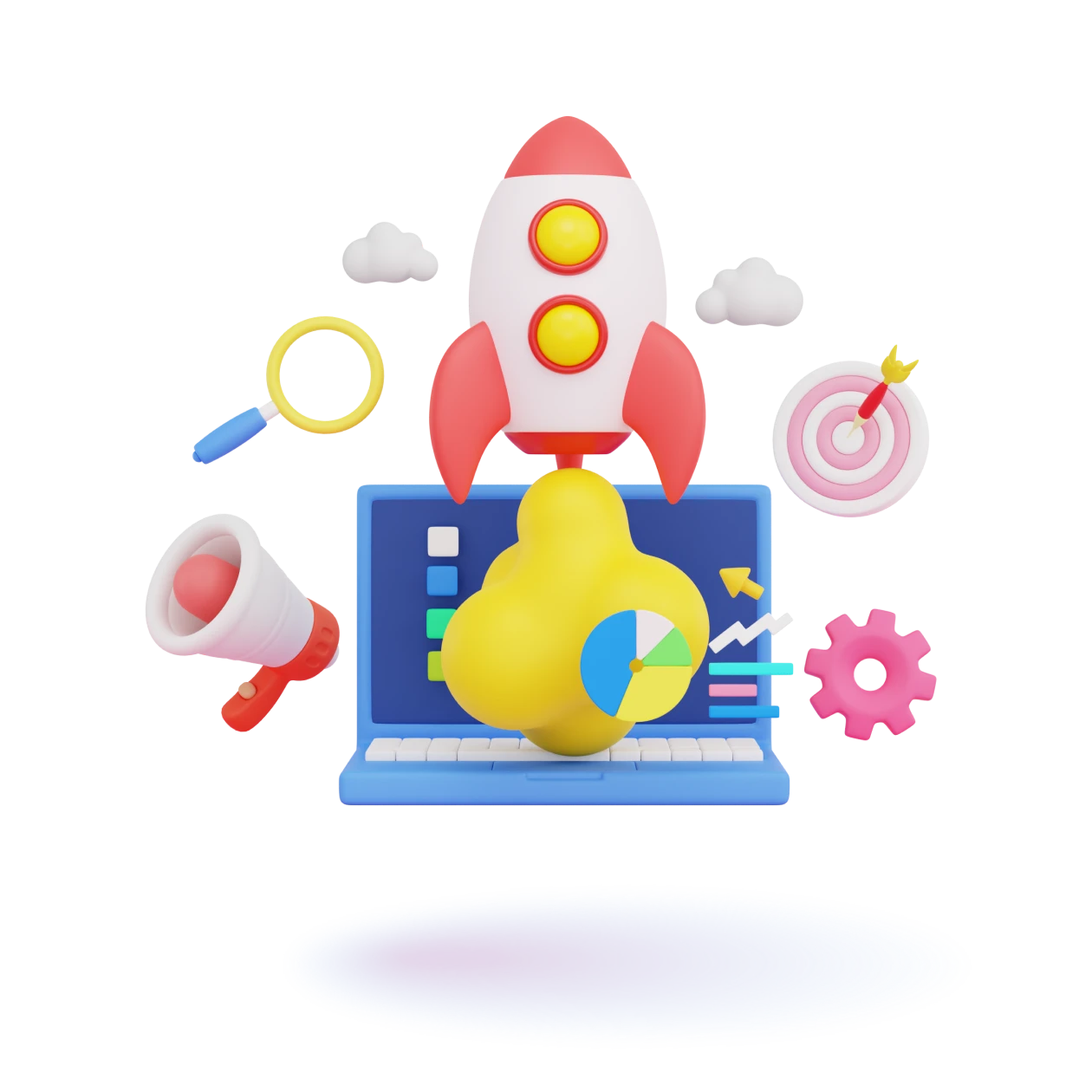The days of relying on traditional B2B lead generation channels are over. Buyers are more distracted, more skeptical, and more spread out than ever. You have paid ads competing for attention in a crowded feed, and webinars hoping someone will show up. It’s a lot.
So when companies ask, “What’s the best channel?” the answer’s simple: none of them work in isolation.
The real winners are those who master multi channel B2B lead generation, using each tactic to support and amplify the others. But here’s the thing: even with all those tools, outreach still stands out. It’s the one move that doesn’t wait. It pushes. It reaches the right person with the right message before they raise their hand.
At SalesAR, we’ve tested every major channel across hundreds of campaigns. And while inbound, paid, and partnerships all matter, we keep coming back to this truth: outreach opens the door faster.
Let’s break down the lead generation channels B2B companies should prioritize in 2025—and how to align these lead generation channels with sales readiness.
Overview of B2B Channels: What Works in 2025
There’s no shortage of B2B lead generation channels to explore. But let’s be honest—not all of them move at the same speed. If you’re aiming for traction fast, some simply perform better than others when the goal is real conversations with real buyers.

1. Inbound Marketing
Inbound marketing is your brand’s foundation—it’s the slow and steady builder that pays off over time. Not all lead generation channels B2B campaigns use are equally effective—some shine only when paired with outbound intent.
We’re talking blog posts that rank for your core topics, SEO that pulls in organic traffic, whitepapers and gated guides that trade value for email addresses, and webinars that showcase your team’s expertise.
All of this works by building trust. Instead of interrupting, you attract. Instead of chasing, you educate. And when it’s firing on all cylinders, inbound turns strangers into subscribers, subscribers into leads, and leads into conversations.
But here’s the reality check: inbound is a waiting game.
It performs best when your ideal buyers are actively searching for a solution. That’s maybe 3–5% of your market at any given time. The rest? They’re not Googling. They’re not signing up for webinars. They’re buried in priorities and won’t hit your funnel until something forces their hand—or until you put your brand in front of them.
The rhythm of cross channel lead generation is more important than the quantity of touches.
That’s where inbound falls short on its own.
- It doesn’t create urgency.
- It doesn’t target dormant but qualified leads.
- And it doesn’t help when the pipeline is dry and your sales team needs calls next week.
Inbound marketing shines as part of a long-term brand and lead gen ecosystem. It fills the top of the funnel with warm traffic and adds credibility to your outbound efforts. Omnichannel lead generation maximizes relevance—meeting prospects where they are, not where you wish they’d be.
2. Outbound Marketing
Outbound is the cornerstone of effective cross channel lead generation—it doesn’t wait. It doesn’t hope someone finds your content or sees your ad. It goes straight to the people who match your Ideal Customer Profile and puts a message in front of them—deliberate, targeted, and trackable.
This is why, in 2025, cold outreach remains the leading approach when you need a pipeline now.
With outbound, you control:
- Who sees the message
- When they see it
- What they see
It’s not limited by search intent or algorithm reach. It’s outbound that lets you speak directly to the CMO at a fast-growing fintech, even if they’ve never heard of you.
The most successful outbound campaigns today use:
- Deep ICP segmentation
- Tight, value-driven messaging
- Multichannel sequencing (email + LinkedIn + follow-ups)
When supported by ICP research and multistep messaging flows, lead generation strategies are most effective.
It’s not just cold anymore. It’s personal, relevant, and persistent without being annoying.
Done well, outbound is the fastest route to conversations with decision-makers. And in a world where timing is everything, starting the right conversation at the right time is a serious competitive edge.
That’s why smart teams embrace channels for lead generation that include outbound as their control lever.
Take our partnership with Akridata. Their team needed to build a predictable pipeline. We stepped in with a tailored outbound strategy—backed by ICP research, messaging flows, and multichannel execution. The result? Over 297 meetings booked, 55,000+ contacts researched, and a 7% reply rate. It’s not a pitch—it’s a proven path to revenue.
No cold outreach, no stress. Just sales-ready calls with decision-makers.
3. Paid Advertising
Paid media is your quick lever—Google Ads, LinkedIn Ads, YouTube pre-roll, and even programmatic display. The pitch is simple: pay to put your offer in front of the right people now.
And yes, when it works, it works. You can reach niche job titles, filter by company size, and tailor messaging to each audience segment. The clicks come fast. So does the data. You’ll know within days if your message is resonating.
But here’s the trap: paid is brutally unforgiving.
CPCs in B2B are no joke—$12, $18, even $30+ per click isn’t uncommon, especially in SaaS or enterprise tech. And with each click, expectations rise. If your targeting is off, your copy is unclear, or your landing page doesn’t convert, you’ll burn through budget before a single call gets booked.
That said, paid ads can play beautifully with outbound. We’ve seen campaigns where LinkedIn ads ran a week before cold outreach began. Prospects were already familiar with the brand. And when the email came? They clicked.
Think of paid media as fuel.
- It speeds things up.
- It amplifies visibility.
- However, it requires a solid engine, message, funnel, and follow-up to convert clicks into deals.
Use it to warm leads, retarget hand-raisers, or reinforce outbound messaging. Just don’t treat it like a silver bullet. Testing multiple lead generation channels in parallel helps identify which combinations yield the most qualified conversations.
4. Referral & Partner Programs
Referral and partner programs are one of the most overlooked growth levers in B2B. Why? Because when they work, they work. A referral doesn’t just bring in a lead—it brings in credibility. It shortens sales cycles. It skips the warm-up phase. You’re no longer just another vendor; you’re the one someone they trust recommended.
It’s the kind of lead every sales team loves:
- High intent
- Pre-qualified
- Often already sold on your value
Strategic partnerships work the same way. You align with another product or service that shares your audience, and you both win. Whether it’s a co-marketing webinar, bundled offering, or just a mutual intro system, the quality of leads tends to be off the charts.
But there’s a catch.
You can’t force referrals. You can’t hit a quota on “favors.” Even well-structured partner programs can stall if there is no ongoing incentive or alignment. These channels are built on relationships—real ones—and those take time, effort, and consistency to maintain.
The strength of your campaign depends on how well your lead generation channels complement each other.
5. Social Media & Community Marketing
Let’s be clear: social media is not where most B2B deals start. However, it is where many of them get validated.
A prospect reads your cold email and then googles you. What pops up? A half-dead blog and a Twitter account last updated in 2022? Or a LinkedIn feed full of smart takes, client wins, and proof that you know what you’re talking about?
Social media and community marketing are about presence. They help you show up and stay top of mind. Especially in B2B, where purchases are rarely made in isolation, credibility is crucial. And your public footprint—LinkedIn, Slack groups, niche forums—is where buyers check for social proof before replying.
That’s why we encourage clients to keep things active:
- Post insights, not pitches
- Join industry conversations
- Highlight client success stories
- Participate in the communities where your ICP spends time
You won’t always see an immediate spike in meetings from these efforts. However, you will notice better engagement from cold outreach when the recipient is familiar with your name.
Social is the long game. Play it well, and it enhances your entire multichannel lead generation ecosystem.
6. Conversational Marketing
Conversational marketing is all about timing. It’s the live chat that pops up just when someone’s wondering about pricing. It’s the chatbot that answers basic questions at 10:43 PM. It’s the SMS that follows up after a webinar, while the content is still fresh.
These tools shine not at the top of the funnel, but in the middle, right when someone’s on the fence or actively considering options.
Used well, they:
- Speed up qualification
- Remove friction from the buyer journey
- Turn passive interest into a real pipeline
Let’s say someone lands on your product page. They’re curious—but not curious enough to book a call just yet. A chatbot offers to help. Suddenly, you’re in a real conversation. The lead gets qualified. A meeting is booked—without a single email.
The same applies to SMS. Used selectively (and respectfully), it can dramatically increase response rates for warm leads. Think confirmations, follow-ups, reminders—not cold pitches.
But here’s the thing: conversational marketing doesn’t start the fire—it fans it. These tools rely on the prospect’s attendance. That’s why they’re incredible for mid-funnel engagement and conversion, but not something you can build your whole pipeline on.
When paired with outbound or inbound efforts, though? They turn interest into action, fast.
Cold Email: Still King, If Done Right
We once worked with a startup that swore email was dead. They’d tried a few blasts, saw zero replies, and wrote it off. But the problem wasn’t the channel—it was the message. We rewrote their opener to reference a recent funding round their prospect had closed. Nothing fancy. Just one tight sentence that said, “Congrats—I saw your Series A came through last week.” Their reply rate tripled.
That’s the power of cold email—when it’s done right.
It’s direct. It scales. And when you take the time to speak to the person, not just the persona, it cuts through the noise better than most B2B lead generation channels out there.
Here’s why it still works in 2025:
- It’s personalizable at scale.
- It’s more cost-effective than paid ads.
- It meets buyers where they live: their inbox.
Personalized email campaigns can boost reply rates by up to 32%. That’s not a minor lift—it’s the difference between a campaign that flops and one that fills your calendar.
We’ve tested dozens of B2B lead generation channels, but few outperform a synchronized outreach system.
Best Practices?
- Build hyper-specific ICPs. No more “marketing managers at tech companies.”
- Get detailed.
- Keep the copy short and value-led. No one’s reading a novel.
- Follow-up sequences matter more than the first email. Most replies come on the second or third touch.
“One sentence of personalization is often more powerful than a full paragraph of fluff.”
LinkedIn Outreach: The Networking Engine
Cold emails started the conversation. LinkedIn sealed the meeting. That’s how it goes more often than not. Even the best B2B lead generation channels fall short when execution lacks clarity and timing.
One of our campaigns had a solid open rate but slow replies. We took the same list, found the prospects on LinkedIn, and started engaging—posting likes, thoughtful comments, and sending connection requests that didn’t come across as sales pitches. The same people who ignored the email? They replied on LinkedIn within days.
This platform isn’t just for job hunting. It’s where mid-to-senior decision-makers review meetings, share updates, and evaluate potential partners. If your prospects are there, your outreach should be too.
Here’s what works:
- Soft touches first. A like or comment before messaging boosts acceptance rates and warms the lead.
- Non-pitchy openers. “Saw your post on [topic], loved your take” works better than “Hey, got a second to talk about your pain points?”
- Thought-leadership support. Re-sharing or engaging with their content builds visibility and credibility.
“We treat LinkedIn as a pre-warm channel. Outreach without context is noise. Outreach with context becomes opportunity.”
When LinkedIn is used right, it doesn’t just support cold outreach—it accelerates it.
Multichannel Magic: Why One Channel Isn’t Enough
Many teams fail in multichannel lead generation because they focus on presence over precision.
A SaaS client came to us frustrated. Their cold emails weren’t landing—opens were low, replies even lower. The message was solid, but it felt like it was going nowhere.
We didn’t rewrite the entire campaign. Instead, we layered LinkedIn touches on top of. SDRs started liking posts, dropping comments, and sending personalized connection requests. Then we triggered a simple retargeting ad for anyone who’d opened the email but hadn’t replied. For early-stage campaigns, lead generation via outbound and retargeting often delivers the quickest feedback loops.
That same message? Suddenly, it landed. The difference wasn’t what we said—it was how often and where they saw it.

Here’s the truth: in omnichannel lead generation, channels don’t compete—they compound.
- Email → LinkedIn → Call. That three-step sequence alone can double conversion rates.
- Retargeting after an email open. They see your name again. Now you’re not a stranger.
- Warm a lead on social media, then follow up via email. Familiarity drives trust.
And the data backs it up. According to Campaign Monitor, multichannel campaigns see 24% higher engagement compared to single-channel efforts.
With multichannel lead generation, the goal is to create compound visibility that drives trust and replies.
It also helps to have the right tools in place. CRMs like HubSpot and outreach platforms like Instantly or Lemlist make cross-channel flows easier than ever. You can build a rhythm—automated, yet personal.
Effective cross channel lead generation isn’t about doing everything—it’s about doing the right things in sync.
Conversational Outreach: Chat, Instant Replies & SMS
Conversational outreach is a vital part of any multichannel lead generation strategy—it catches leads right when they’re ready to act.
We noticed a pattern—leads who replied via chat were twice as likely to book meetings. No back-and-forth emails. No ghosting after an initial open. Just straight to the point.
That’s the beauty of conversational outreach. Whether it’s live chat on your site, an SMS follow-up after a webinar, or a quick WhatsApp message after the demo, it meets people in the moment while their intent is still fresh. While they’re still thinking about you.
Why it works:
- It’s fast. No waiting for inbox time or threading through old emails.
- It feels personal. A quick, clear message often feels more human than a cold email.
- It’s real-time. You can answer objections, schedule demos, or qualify leads on the spot.
You don’t need to go full AI either. Smart chatbots can route basic questions and hand off hot leads to humans. Platforms like Drift or Intercom help automate without sounding robotic. And when SMS is used sparingly—and thoughtfully—it’s surprisingly effective.
According to Kayako, companies that use live chat see a 40% increase in conversion rates. That’s not a tweak. That’s a game-changer.
Conversational outreach is a vital part of any multichannel lead generation plan—it complements them by catching leads right when they’re most likely to say “yes.”
The SalesAR Experience
Bulu came to us with a clear vision, but no meetings were scheduled. They had a unique offer, solid positioning, and a strong brand in the subscription box space. What didn’t they have? Conversations with the people who could say “yes.”
Here’s what happened:
- 22,000+ contacts researched
- 875 replies
- 75 appointments scheduled
Want the full breakdown? SalesAR x Bulu Case Study
First, we dug deep into their Ideal Customer Profile, focusing on decision-makers in retail innovation and digital commerce. Then we built cold email flows that didn’t feel cold—layered in LinkedIn to warm the outreach, and used SDR feedback loops to refine as we went.
Lead generation channels B2B companies rely on today must balance scalability with personalization. The result? Pipeline. Fast.
“This has probably been one of the best approaches that we’ve come up with together. We’ve closed a couple of deals, including one with a very meaningful client in terms of revenue and reputation.”
At SalesAR, we’ve optimized lead generation channels B2B companies overlook—turning dormant tactics into dynamic touchpoints.
And we’re not a one-hit wonder. We helped one client break into the enterprise through a multi channel B2B lead generation approach combining outreach and remarketing.
Check out SalesAR reviews to see what other clients have to say about their experience: real companies, real meetings, real results.
Ready to see it for yourself? Book a call today and let’s build your pipeline.
The Right Channel Is the One That Gets You Heard
There’s no one-size-fits-all.
One client broke into an enterprise account by integrating LinkedIn into their multi channel B2B lead generation approach. It wasn’t flashy. No sales pitch. Just a quick, genuine note about a shared connection and a relevant industry shift. It landed at the right time—and it worked. That conversation evolved into a discovery call, followed by a closed deal within weeks.
Another client had to work harder. Six follow-ups across three platforms. Email, then a connection request, and finally a comment on a LinkedIn post. Weeks of silence, then a chat reply out of nowhere: “Let’s talk.” Same outcome—different path.
That’s what makes 2025 such a fascinating time for cross channel lead generation. There are more tools than ever, but also more noise. The best strategy isn’t the one with the most steps or the flashiest tech. It’s the one that’s built to adapt. Choosing channels for lead generation requires clarity on your Ideal Customer Profile, buyer journey stage, and campaign velocity.
Some prospects respond to email. Others only move when they see your name a few times on LinkedIn. Some won’t engage until they hear a voice or see value in a comment thread.
When evaluating lead generation channels, B2B firms should consider that outbound marketing still has the greatest direct pipeline impact.
Here’s what we’ve learned working across hundreds of B2B campaigns:
- Start lean. Select 1–2 channels for lead generation that you can execute effectively.
- Refine the message. Test it, tweak it, and track what resonates with your audience.
- Use those early wins to guide your next steps.
- Then—and only then—go multichannel. But do it with purpose.
Precision matters more than presence. You don’t need to be everywhere. You need to show up where it counts, when it counts—with something worth responding to.
The clients that succeed long-term aren’t the ones chasing every new tool. They’re the ones that stay flexible. They listen to their data. And they keep evolving.
Ultimately, the best outreach channel isn’t always the trendiest one. It’s the one that gets you heard—and gets you in.
Conclusion: Don’t Just Send—Start Conversations
Here’s the truth no one likes to admit—most lead gen fails not because of the tools, but because of the approach. More emails won’t fix irrelevant messaging. More ads won’t matter if your targeting is off. And more B2B lead generation channels won’t help if you’re just shouting louder into the void.
The kind that starts with relevance. That shows you’ve done your homework. That follows up with timing and purpose, not spammy persistence. Whether it’s one sentence in an email, a like on LinkedIn, or a thoughtful DM, it’s those moments of real connection that break through.
If your lead gen feels stuck, don’t double down on more noise. Focus on relevance, rhythm, and real outreach.
If you’re ready to build an omnichannel lead generation strategy that works—one that we’ve fine-tuned across 500+ B2B campaigns — let’s talk!

